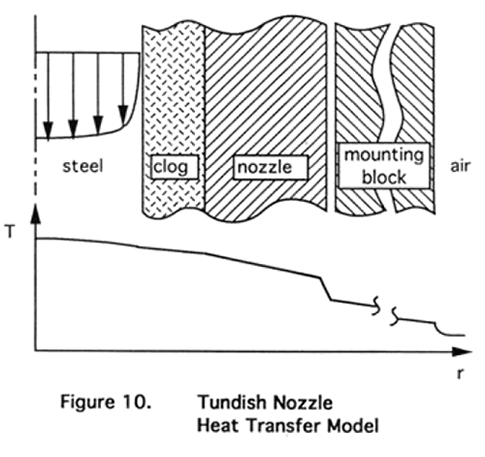|
Clogging in Continuous Casting Nozzles
Keith Rackers and Brian Thomas
Continuous Casting Consortium
Turbulent fluid flow of molten steel through the tundish well and upper submerged entry nozzle region is important to nozzle clogging, in addition to flow in the mold. Clogging limits productivity, in addition to causing serious quality problems. It is being modeled using a variety of mathematical models. The critical phenomena to its formation include freezing, alumina particle motion in the turbulent flow and transport to the walls, adherence to the walls, thermodynamic state of the particles, and interaction with argon gas bubbles. The modelling is being supported by experiments conducted at Inland Steel.

Publications:
Rackers, K., and B.G. Thomas, "Clogging in Continuous Casting Tundish Nozzles", 78th Steelmaking Conference Proceedings, Nashville, TN, April 2, 1995, Iron and Steel Society, Warrendale, PA, Vol. 78, 1995, pp. 723-734. Click here for a PDF version. (469 KB)
Rackers, K.G. and B.G. Thomas, "Clogging in Continuous Casting Nozzles," in COntinuous Casting Vol, 10 Tundish Operations, Iron and Steel Society, Warrendale, PA, 2003, pp. 264-274 (reprinted from 78th Steelmaking COnference Proceedings, Nashville, TN, April 2, 1995, Iron and Steel Society, Vol. 78, 1995, pp. 723-734.)
|

